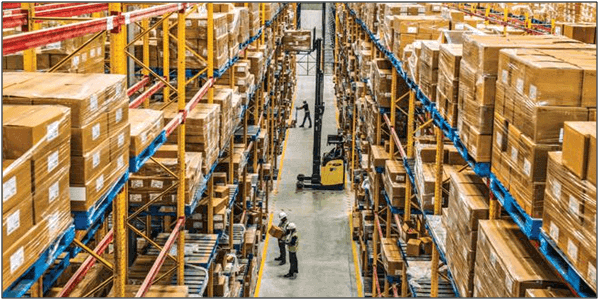Fundamentally, warehousing involved two activities, there are inbound and outbound operations. Inbound refers to the sourcing, purchasing, receiving, investigating, put-away, storage, that is incoming organization. On the other extreme, outbound is tied in with picking, pressing, moving, all these are leaving the association.
Outbound procedure is more work concentrated than inbound processes. Particularly, request picking is the most labor-intensive of the inbound processes, in light of the fact that for each SKU, the worker needs to go to the storage location, search for it and pick it.

Table of Contents
Sourcing of Inbound Raw Materials
The customer sourcing team will source for the raw material that can fit into their manufacturing plant to process the finished goods. This process actually enables moving towards purchasing for them to purchase the materials to go in line with the planning team of their forecast plan.
Transportation of the Incoming Delivery
Types of transportation involved such as by Air, by Sea and by Land. Transportation by air is one of the fastest with high efficiency mode of delivery which is being used by many companies around the world. However, being the fastest and highest efficiency, the cost to use this method for delivery will be costly due to less time taken for the delivery to be made. Transportation by sea is the most frequent use by people. Although this method will take longer time to reach the destination, the cost is more affordable than airfreight. For land transportation, is it mainly for local delivery. For example, suppliers to use a truck to deliver goods within Singapore.

Inbound Receiving from Supplier
Inbound team receiving the goods from a supplier is the process of purchased materials. This process very important because if the supplier has any delay of the delivery, it will be affecting the deadline of the manufacturing plant. So, the purchaser has to keep tracking and ensure all the deliveries are on time. Without being on time, the operations process will not be smooth. Or worst, spending unnecessary costs.
Storage in the Warehouse
For the storage in the warehouse, warehouse personnel will have to check and investigate the goods during receiving. Warehouse personnel have the responsibility to check if all goods received are in good condition before accepting and endorsing the Delivery Order. After receiving the materials in good condition. Firstly, they will proceed re-palletizing to the correct desired pallet dimension. Lastly, warehouse personnel will proceed to put-away the materials to the storage racking in the warehouse according to the materials usage priority. To minimize movement such as reduce walking and traveling in the warehouse. This may increase mistake occurs when a person is regardless physically or mentally tired. By decreasing the amount of movement will aid in faster and more accurate picking.

Outbound for Order from Customers
Outbound receiving order from a customer is the process to do the pick list for warehouse personnel to do the picking. Request picking is the way toward finding and picking the materials to fulfill customer orders. Since the picking process includes cost and can influence consumer loyalty levels, there has been an expanding number of upgrades proposed to help organizations with this store network issue.
Outbound Process Order for Picking and Packing
In the outbound process, picking and packing are the most important factor benefiting the warehouse’s customer. There are many types of picking and packing, such as zone picking, batch picking, single order picking and etc.
The full content is only visible to SIPMM members
Already a member? Please Login to continue reading.

